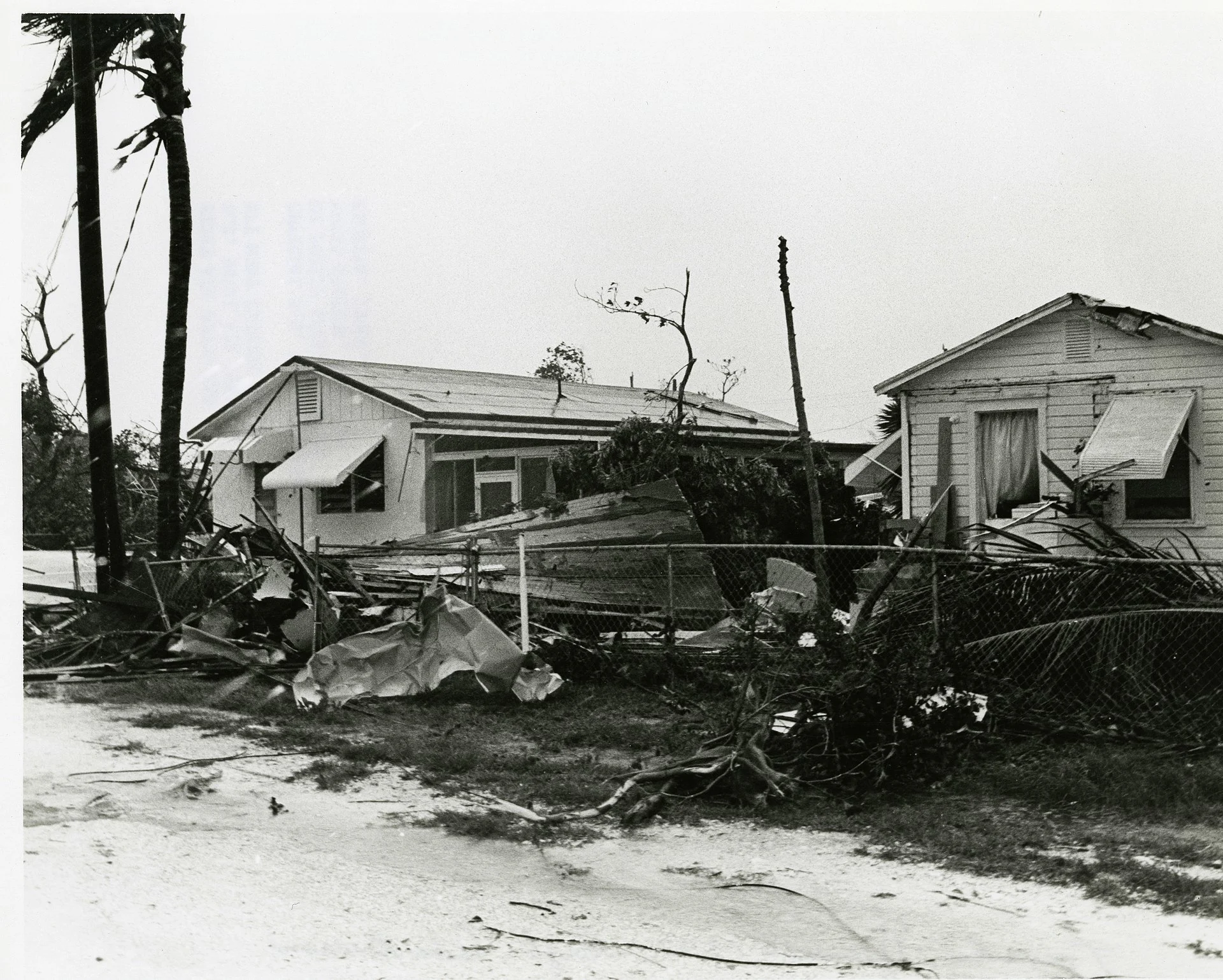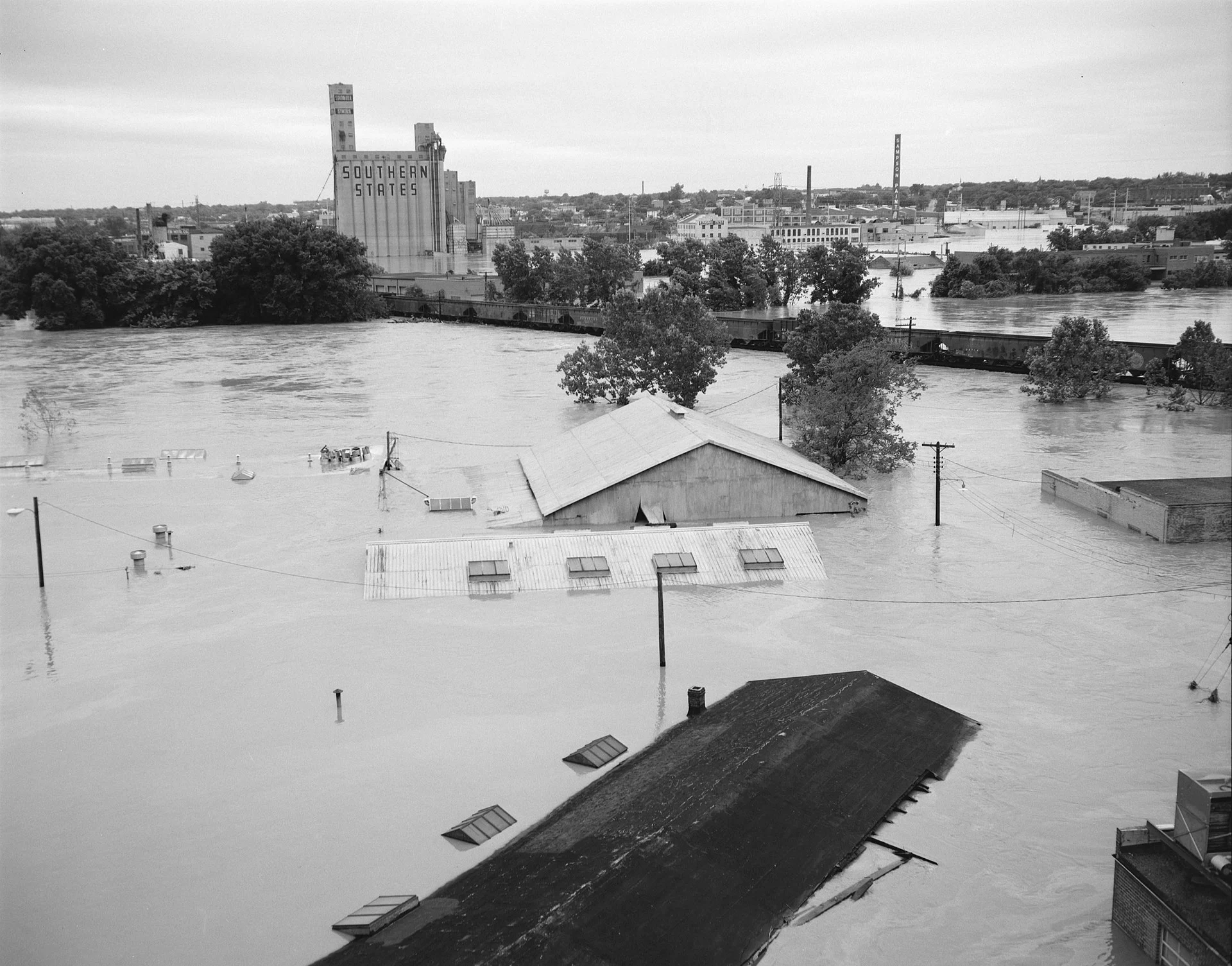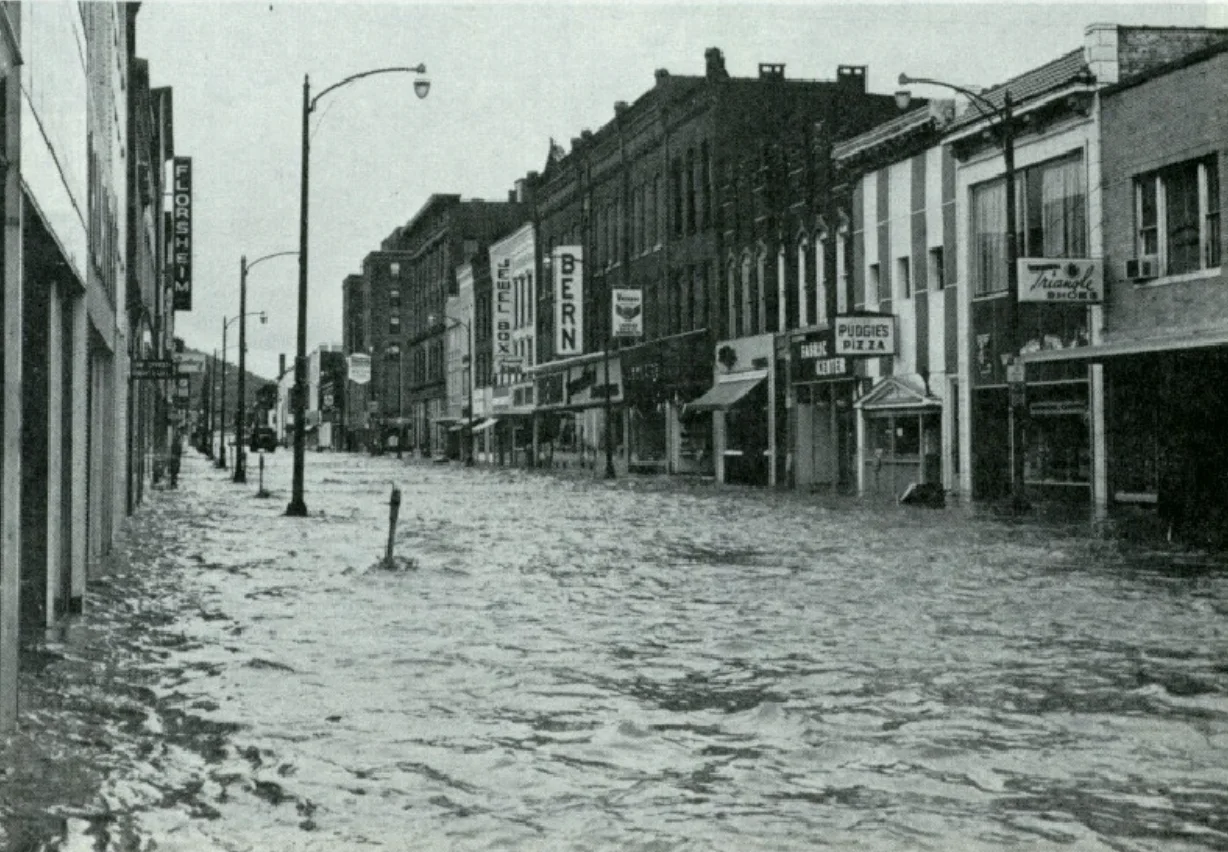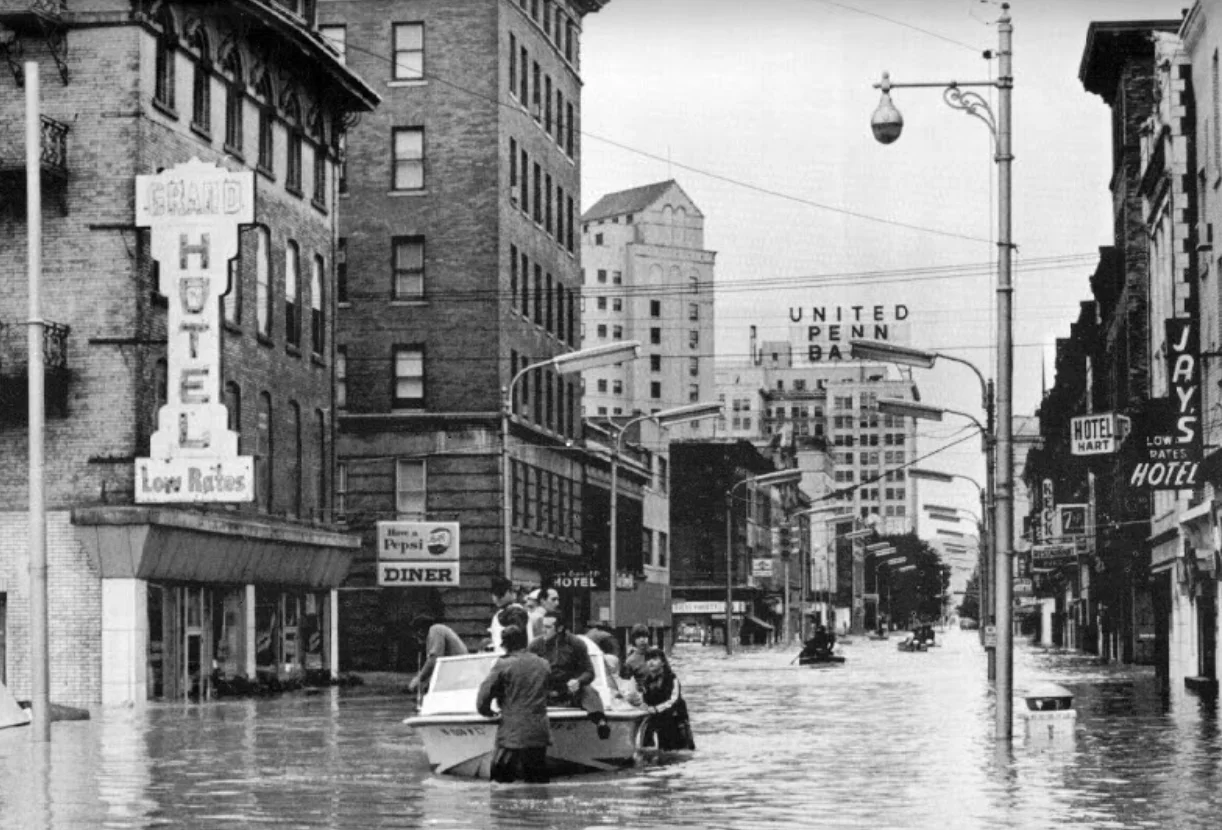
About Hurricane Agnes, a $2.1 billion storm that ravaged the U.S. in 1972
On this day in weather history, Hurricane Agnes reached peak intensity.
This Day In Weather History is a daily podcast by Chris Mei from The Weather Network, featuring stories about people, communities and events and how weather impacted them.
--
On June 18, 1972, Hurricane Agnes reached its peak intensity. It caused $2.1 billion in damage, making it the costliest hurricane to devastate the United States at the time.
Agnes caused 128 deaths from the Caribbean to Canada.

"Damage in Key West, Fla., from a tornado spawned by Agnes." Courtesy of Florida Keys--Public Libraries/Wikipedia/CC BY 2.0
The storm started in the middle of June 1972. By June 11, the banded convection developed in the northwestern Caribbean Sea. By June 15, the depression made its way to the western Caribbean Sea. On June 16, the depression turned into Tropical Storm Agnes.

"Buildings almost fully submerged in Richmond." Courtesy of Wikipedia
On June 18, Agnes became a hurricane in the southeastern Gulf of Mexico. Reaching its peak, the storm attained maximum sustained winds of 140 km/h. On June 19, the storm made landfall close to Cape San Blas, Fla.
Agnes weakened to a tropical storm and back into a depression while around Florida, Alabama, and Georgia. However, Agnes regained tropical storm status on June 21 over eastern North Carolina. The storm continued to gain strength in the northwestern Atlantic Ocean. On June 22, the storm moved inland on Long Beach, N.Y.

Flooding in Elmira, N.Y. Courtesy of National Weather Service Binghamton
On June 23, Agnes entered Pennsylvania and Ontario on June 25. The storm created a tornado in Maniwaki, Ont., which killed two people.
Agnes made it to Ireland and Iceland before getting absorbed on July 6.

Flooding in Corning, N.Y. Courtesy of National Weather Service Binghamton.
Hurricane Agnes affected 15 states and Washington D.C. It damaged around 110,000 houses and destroyed 3,351. Thousands of other buildings experienced major damage.

*Flooding in Wilkes-Barre, Pa. Courtesy of National Weather Service Binghamton."
Out of the 128 fatalities caused by the storm, 119 took place in U.S. Due to the impacts of Agnes, the name was retired in 1973.
To learn more about Hurricane Agnes, listen to today's episode of "This Day In Weather History."
Subscribe to 'This Day in Weather History': Apple Podcasts | Amazon Alexa | Google Assistant | Spotify | Google Podcasts | iHeartRadio | Overcast'
Thumbnail: "View from Erie Lackawanna train tracks, looking down Water Street in Elmira, N.Y., during the Flood of 1972. The Elmira Savings and Loan bank building can be seen in the background." Courtesy of Maxq32/Wikipedia/CC BY-SA 4.0